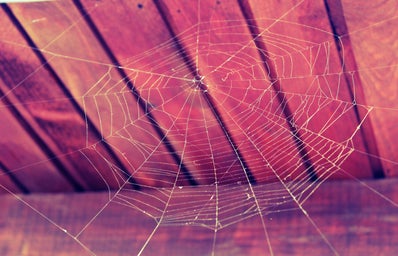2000 years ago, the ancient Celtic festival of Samhain brought the traditions of Halloween to life. The festival marked the end of the summer and harvest season and signified the beginning of the dark winter, a time associated with human death. The American Halloween tradition of “Trick-or-Treating” goes back to a time in England where poor citizens would beg for food and would be provided with “soul cakes” by the families during the festivities of the All Soul’s Day parade. In return, the poor citizens promised to pray for the relatives of the dead families who gave them food. The church at the time encouraged people to practice this notion of distributing “soul cakes” as it was a way to leave food for roaming spirits. People would keep food on the outsides of their homes to ward off and please the ghosts. This practice turned into what was known as “going a-souling” where children visited the houses in the neighborhoods to ask for food and money. The tradition of dressing up in costume on Halloween stems from these practices as well. Since it was believed that the spirits of ghosts roamed about on this day, people wore masks to avoid being recognized and instead fit in with the ghosts as one of them.
Trick-or-Treating on Halloween has become a tradition ever since the 1920s. The United States, Canada, the United Kingdom, Ireland, Puerto Rico and parts of Mexico are the main countries that indulge in Trick-or-Treating. It is the custom of children wearing costumes and going from door to door in their neighborhoods asking for candy. “Trick-or-Teat, give me something good to eat” is a popular phrase spoken in many Halloween themed movies of children begging adults to give them candy. Adults too are willing to stock up on Candy for this night, October 31st and willingly hand out candy to all the kids. They themselves may choose to wear a costume and decorate their homes in eerie Halloween decorations.
It is apparent that Halloween is no longer a mere celebration, it is a brilliant marketing plan to keep building a billion-dollar industry and how every little business uses Halloween to capitalize on profit. This celebration that once used to be the celebration of a Celtic harvest festival is now a ploy to get consumers to spend money, and consumers are only happy to do it. Industries have cleverly capitalized on Halloween in the last few decades. Just by looking around you, the many Halloween gimmicks can be spotted as everyone takes part in it. Adults and children like wise indulge in their own versions of Halloween celebrations. Whilst children go trick-or-treating, adults usually attend Halloween themed parties, mixers or raves. There’s fun in it for everybody. Every person, young or old seems to have a part to play, in their Halloween costumes!
It is quite noticeable how businesses try to tempt consumers into spending big money for Halloween. The Halloween industry is worth more than $8 billion. The retail industry comes in first place, for all costumes, make up and accessories. The candy industry comes in second place undoubtedly in this competition and the decorations stores comes in third, no doubt as people tend to become creative and splurge during Halloween. Greeting card industries also thrive greatly during this time.
These are some of the main ways companies try to market Halloween to their customers:
1.They decorate their store in Halloween themed decorations, from ghouls and ghosts to jack-o-lanterns placed on the store front. This showcasing of their Halloween spirit is an invitation to consumers to take part in the Halloween spirit by buying something from the store.
2. All social media posts, company websites, newsletters and emails take on a Halloween theme. By showing that they participate, companies showcase their spirit and invite consumers to indulge in the spirt of Halloween.
3. They create themed bundles like the limited edition Jaws costume or Buy 1, Get 1 free Chucky masks. By bundling products together and getting creative with fun names, companies capitalize greatly. The candy industry mainly uses these tactics by selling candy in bundles.
4. Companies tend to have flash sales throughout the month, displaying it to be for only for a limited amount of time, so consumers would act fast and buy before it all allegedly runs out.
5. Use “dress up discounts” as a ploy to get consumers to dress in costume and receive store discounts. This works in companies’ favor as consumers spend money on buying costumes just so they can dress up to spend more money on other Halloween goods.
6. Give away tickets to Halloween themed events like the Halloween Haunt at Wonderland or local escape rooms or haunted houses, so consumers would be willing to buy their products in order to get these free tickets.
With that said, this Halloween make sure to ponder if you are really buying only what you need or buying into the Halloween gimmick
HAPPY HALLOWEEN!!!!


